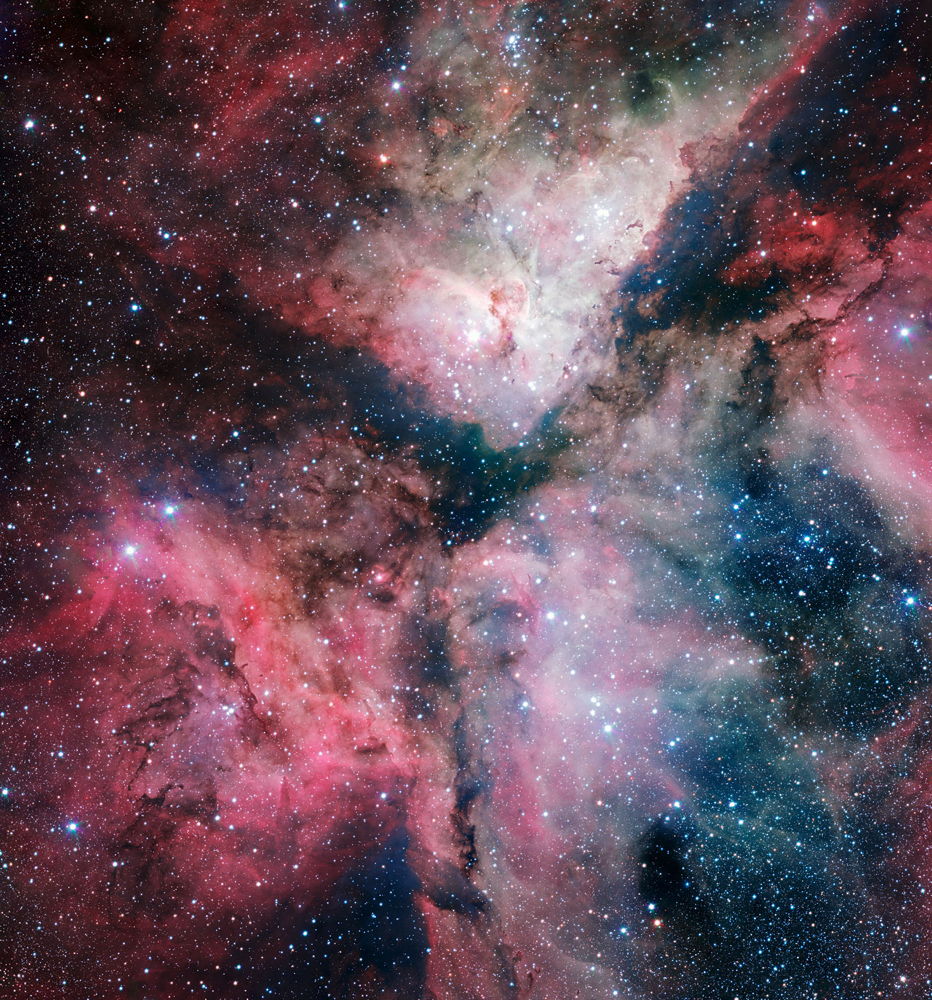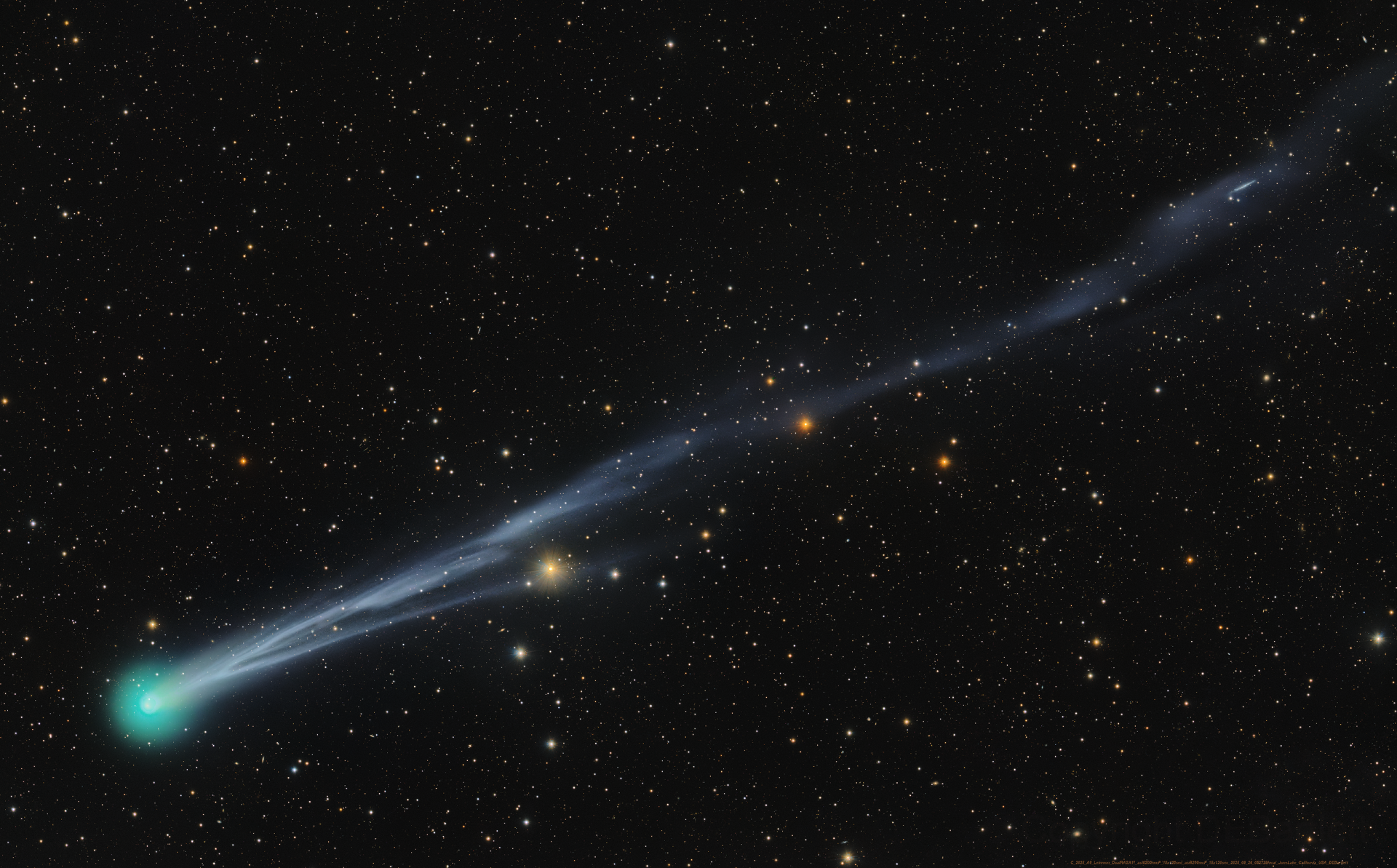Glowing Nebula Photo Marks New Telescope's Inauguration

A gorgeous photo of a star-forming region of space called the Carina Nebula marks the inauguration of a new telescope — the largest instrument in the world devoted to surveying the sky in visible light.
The VLT Survey Telescope (VST) at the European Southern Observatory's Paranal Observatory in Chile was officially inaugurated today (Dec. 6) in Naples, Italy.
While the Carina nebula has been photographed many times before, most telescopes can only observe a small part of it at once. The VST, designed for large surveys of the sky, has a very wide field of view, and was able to image almost all of Carina in a single photo.
The nebula is a cloud of glowing gas and dust that serves as a nursery for baby stars, which are forming there at a furious rate. Carina is relatively near Earth, and lies about 7,500 light-years away in the constellation Carina (the Keel).
The many hot, young stars in the nebula release ultraviolet light that heats up the hydrogen gas, making it glow red. Just above the center of the photo is a bright, volatile star called Eta Carinae, which is visible to the naked eye in the southern hemisphere.
This star's brightness has varied significantly over time. At some points, it has been invisible to naked-eye observers, and at other times, such as in the mid 19th century, it became so bright it was incorporated into oral traditions by the Boorong Aboriginal people of northwestern Victoria, Australia. Astronomers think it's a good candidate to explode in a supernova in the future.
The inauguration ceremony today for the VST was held at the Italian National Institute for Astrophysics Observatory of Capodimonte, in Naples, and attended by the Mayor of Naples and other dignitaries. The photo being released today was taken with the help of Chilean president Sebastián Piñera, who visited the Paranal Observatory on June 5.
Breaking space news, the latest updates on rocket launches, skywatching events and more!
The new telescope is 2.6 meters (8.5 feet) wide, and boasts a giant 268-megapixel camera called OmegaCAM. The observatory is sponsored jointly by the European Southern Observatory and the Italian National Institute for Astrophysics.
You can follow SPACE.com assistant managing editor Clara Moskowitz on Twitter @ClaraMoskowitz. Follow SPACE.com on Twitter @Spacedotcom. We're also on Facebook & Google+.

Clara Moskowitz is a science and space writer who joined the Space.com team in 2008 and served as Assistant Managing Editor from 2011 to 2013. Clara has a bachelor's degree in astronomy and physics from Wesleyan University, and a graduate certificate in science writing from the University of California, Santa Cruz. She covers everything from astronomy to human spaceflight and once aced a NASTAR suborbital spaceflight training program for space missions. Clara is currently Associate Editor of Scientific American. To see her latest project is, follow Clara on Twitter.
